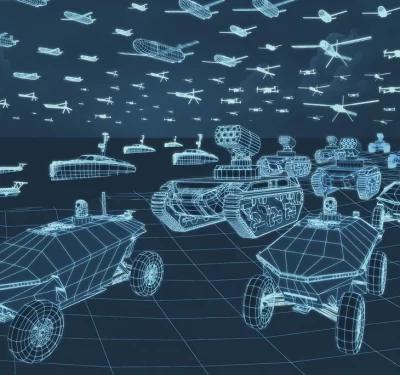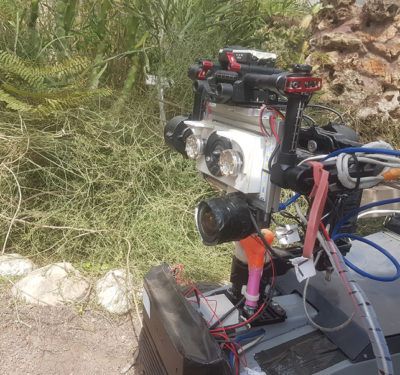AUVSI has announced the official launch of Trusted UGV, the first-ever industry certification program focused on cybersecurity and supply chain integrity for uncrewed ground vehicles (UGVs). The certification was developed through a collaborative industry effort led by AUVSI, with technical support from Neya Systems and its parent company ARA, along with input from the AUVSI Cyber Working Group and Ground Advocacy Committee, which included a coalition of UGV manufacturers, cybersecurity experts, and government stakeholders.
As UGVs are increasingly deployed across a wide range of use cases—from defense and public safety missions to critical infrastructure inspec1on, logis1cs, and commercial opera1ons—their reliance on soaware, sensors, and connectivity makes them increasingly vulnerable to cyber threats and supply chain risks. A cyberattack could disrupt operations, interfere with control systems, or expose sensi1ve data, introducing significant opera1onal, financial, and na1onal security consequences.
The Trusted UGV cer1fica1on sets a new industry benchmark for digital security and procurement readiness, ensuring ground placorms across all sectors can be safely integrated, deployed, and trusted in mission-cri1cal environments.
Built on AUVSI’s Trusted Cyber Framework and adapted protocols, the certification establishes a new benchmark for protecting UGVs from cyber threats, software vulnerabilities, and foreign supply chain risks.
“This certification is more than a checklist—it’s a signal to customers, government agencies, and industry partners that a placorm meets the highest standards of security, reliability, and responsible innovation,” said Casie Ocana, vice president of public affairs at AUVSI. “Trusted UGV represents a proactive step forward in securing our ground systems and protecting the industrial base.”
Trusted UGV builds on AUVSI’s established Trusted Cyber Framework and protocols, delivering a structured, repeatable process for evalua1ng:
- Product and Device Security: Preventing hardware and software-based threats
- Remote Operations and Connectivity: Securing command and control systems
- Supply Chain Risk Management: Ensuring vendor integrity and traceability
- Corporate Cyber Hygiene: Promo1ng strong organiza1onal cyber practices.
Designed for both commercial and government applica1ons, the certification aligns with emerging federal cybersecurity policies and offers a scalable framework that will evolve alongside new technologies and acquisition standards.“ Trusted UGV is tailored to the operational realities of ground systems, including harsh, unpredictable, and GPS-denied environments,” said Kurt Bruck, vice president, Neya Systems. “By working directly with stakeholders across defense and industry, we’ve developed a cybersecurity framework that not only enables rapid innova1on but also reinforces mission assurance and national security at scale.”
RELATED: Read Inside Unmanned Systems’ Inside AI interview with Kurt Bruck.
As part of the program launch, Neya Systems is showcasing a cyber-hardened Polaris MRZR 4 at XPONENTIAL, demonstrating one type of vehicle that will undergo the Trusted UGV certification process. This diesel-powered, side-by-side utlity task vehicle (UTV) is equipped with custom autonomy hardware and advanced cyber protections, offering a clear example of how digital systems on rugged placorms can be secured. Designed for opera1ons in denied or contested environments, the MRZR supports the safe transport of personnel, supplies, and equipment.
The integration of autonomous navigation and advanced communica1ons systems, however, increases the system’s exposure to cyber threats—necessitating robust, embedded cybersecurity measures to ensure mission assurance. Neya Systems looks forward to formally certifying the vehicle through the Trusted UGV process to demonstrate its commitment to secure, mission-ready autonomy.
The Trusted UGV framework applies to a wide range of digitally enabled ground systems from defense placorms like MRZRs and tac1cal trucks to commercial assets such as autonomous mining vehicles, construction equipment, and industrial logistics platforms.





